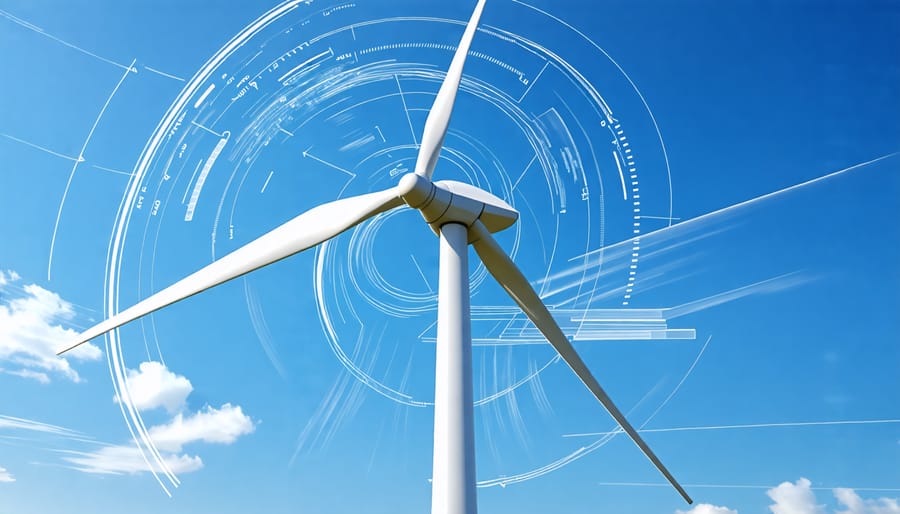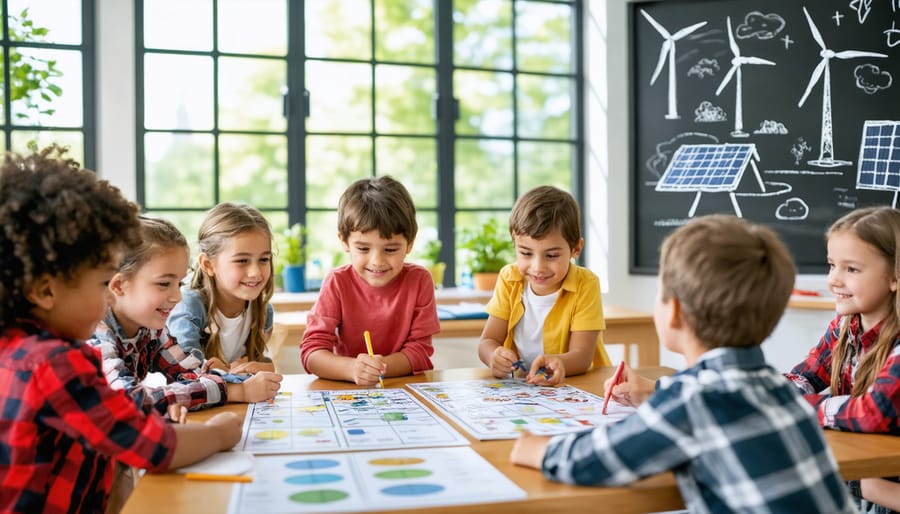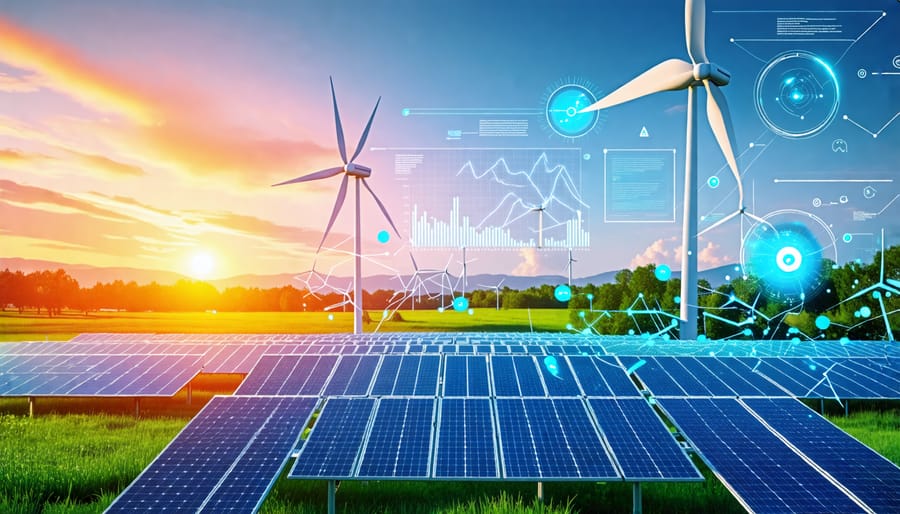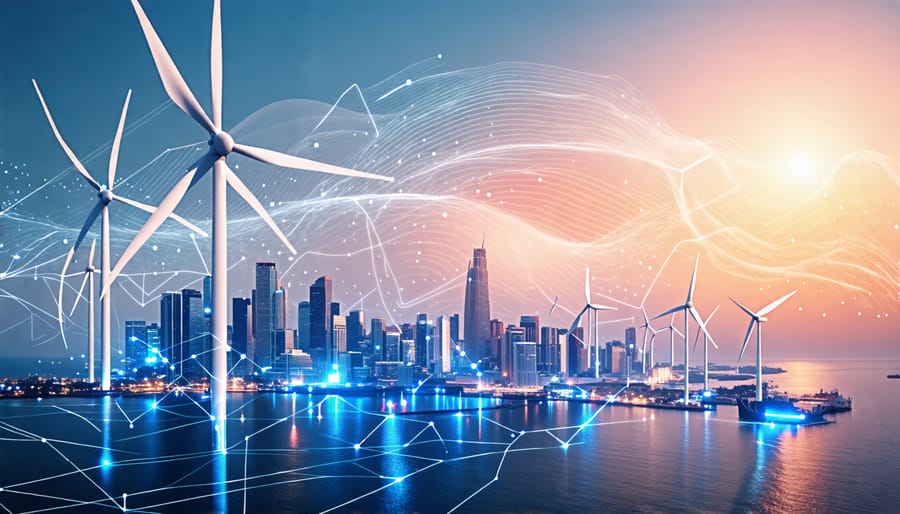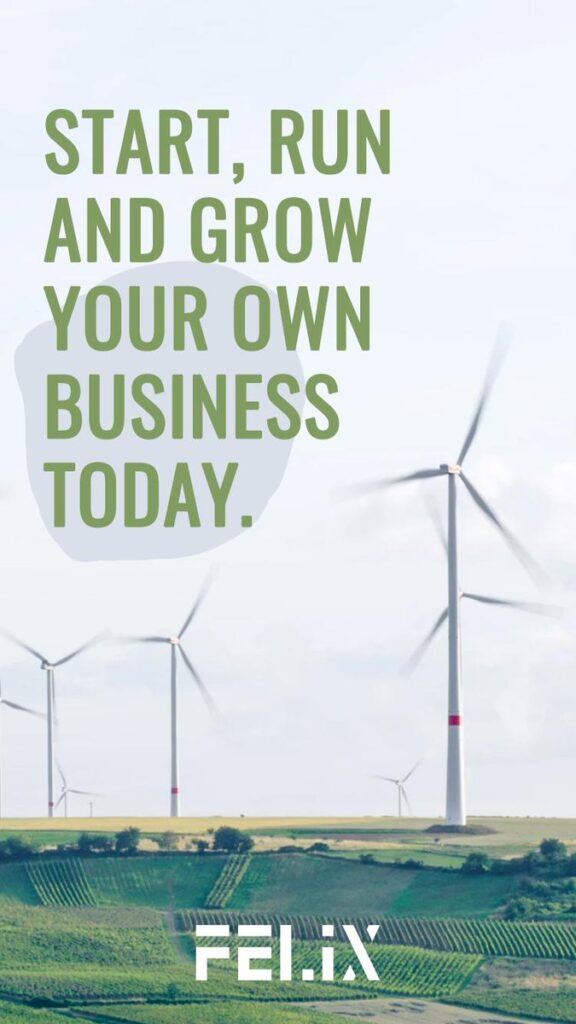Harnessing the power of moving air, wind energy has emerged as a leading renewable source poised to reshape our energy landscape. As towering turbines dot horizons worldwide, capturing the breeze and transforming it into electricity, the question arises: How exactly does wind energy work? From the graceful dance of blades to the complex interplay of aerodynamics, generators, and power grids, the journey of wind from gust to light switch is a fascinating tale of innovation and engineering prowess. In this article, we’ll explore the science behind wind power, unravel the technologies that make it possible, and delve into the challenges and triumphs of harnessing one of nature’s most abundant resources. Get ready to discover the remarkable story of how the wind’s gentle whispers are transformed into the lifeblood of our modern world – clean, sustainable electricity.
How Wind Turbines Capture Energy
Blades, Shaft and Generator
The power-generating process of wind energy begins with the blades, which are engineered to capture the kinetic energy of moving air. As wind flows over these aerodynamic blades, it creates lift and causes the rotor to spin, similarly to how an airplane’s wings function. The spinning rotor is connected to a shaft that extends into the wind turbine’s nacelle, which houses the generator. As the shaft rotates, it turns the generator, converting wind into electricity through a process called electromagnetic induction. Inside the generator, the spinning shaft is surrounded by coils of copper wire and powerful magnets. The motion of the magnets around the coils generates alternating current (AC) electricity, which is then sent down cables to a transformer at the base of the turbine. The transformer steps up the voltage to enable long-distance transmission to the electrical grid or battery storage systems. Advancements in blade design, materials, and generator efficiency continue to improve the power output and reliability of modern wind turbines, making wind energy an increasingly viable and sustainable option for meeting our growing energy needs.
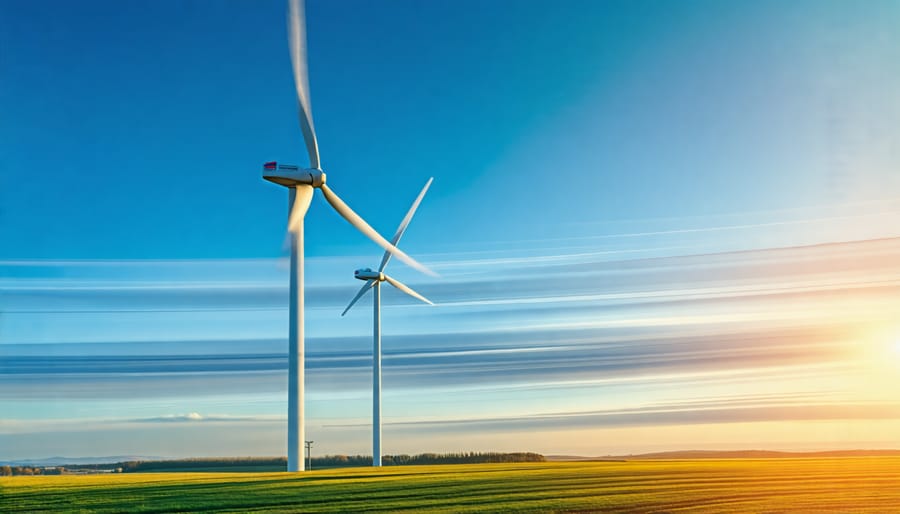
Turbine Designs and Sizes
Wind turbines come in a variety of designs and sizes to suit different applications and environments. The most common configuration is the horizontal-axis wind turbine (HAWT), featuring blades that rotate around a horizontal shaft. HAWTs are highly efficient and widely used in utility-scale wind farms. Vertical-axis wind turbines (VAWTs), with blades rotating around a vertical shaft, are less common but can be advantageous in certain situations, such as in urban settings or areas with turbulent winds.
Wind turbines range from small, residential-scale units to massive, offshore giants. Home wind turbines typically have capacities of 1-10 kilowatts and are suitable for powering single households or small buildings. Community-scale turbines, with capacities of 10-100 kilowatts, can supply electricity to multiple homes or larger facilities. Utility-scale turbines, often exceeding 1 megawatt, are designed for commercial wind farms and can power thousands of homes. As technology advances, wind turbines continue to grow in size and efficiency, with some of the largest models boasting rotor diameters of over 200 meters and capacities of up to 15 megawatts. This wide range of turbine designs and sizes allows wind energy to be harnessed effectively in various settings, from residential properties to vast, offshore wind farms.
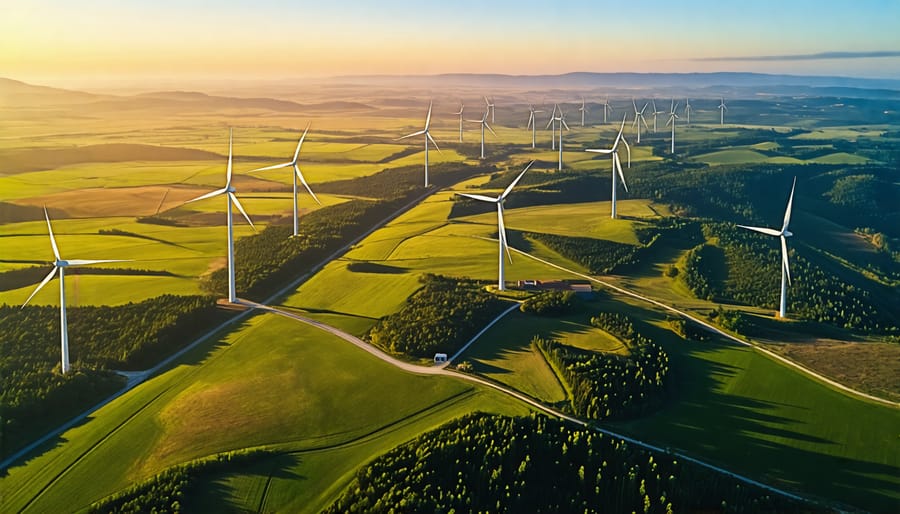
Siting and Wind Farm Development
Assessing Wind Resources
To assess wind resources, developers use sophisticated equipment like anemometers and wind vanes to measure wind speed and direction at various heights. This data is collected over extended periods, typically a year or more, to account for seasonal variations. Developers also analyze the consistency of wind speeds, as steady winds are more desirable for power generation than gusty or intermittent ones.
Using this data alongside advanced computer modeling, developers can forecast the potential energy output of a wind farm. These models consider factors like turbine specifications, site topography, and local climate patterns to predict how much electricity a given number of turbines might produce over time. This information is crucial for determining the economic viability and optimal design of a wind energy project. By carefully assessing wind resources, developers can select the best sites and configurations to maximize clean energy generation while minimizing costs and environmental impacts.
Environmental and Community Impact
The development of wind energy projects involves a rigorous process of environmental studies, regulatory approvals, and community engagement. Wind farm developers must navigate a complex web of federal, state, and local regulations to ensure projects meet environmental standards and mitigate potential impacts on wildlife, landscapes, and communities.
Comprehensive environmental impact assessments are conducted to evaluate a project’s effect on birds, bats, and other wildlife, as well as noise levels, visual impacts, and potential interference with radar systems. Developers work closely with agencies like the U.S. Fish and Wildlife Service to minimize risks and implement conservation measures.
Community outreach is also crucial for the success of wind projects. Developers engage with local stakeholders, including residents, landowners, and indigenous communities, to address concerns, build support, and establish long-term partnerships. This collaborative approach helps ensure that wind farms provide not only clean energy but also economic benefits and opportunities for the communities they serve.
By prioritizing environmental responsibility and community engagement, the wind industry is working to build a sustainable future that benefits both people and the planet.
Integrating Wind Power into the Grid
Integrating wind energy into the electrical grid presents unique challenges due to its variable nature. Unlike traditional power sources, wind speeds can fluctuate greatly, making it difficult to maintain a stable and consistent energy supply. However, advancements in technology and innovative solutions are helping to overcome these obstacles.
One key approach is the use of advanced forecasting models that predict wind patterns and energy production. By accurately anticipating wind speeds, grid operators can better plan for the integration of wind power and adjust other energy sources accordingly. Additionally, the development of smart grids and energy storage systems, such as batteries and pumped hydro storage, allows for the storage of excess wind energy during high-production periods, which can then be released during times of low wind.
Another solution lies in the strategic placement of wind farms across diverse geographical locations. By distributing wind turbines over a wide area, the variability of wind speeds at individual sites can be mitigated, as the overall energy production becomes more consistent. This concept, known as “geographic diversity,” helps to smooth out the intermittency of wind power.
Furthermore, the integration of wind energy into the grid is facilitated by the increasing interconnectivity of power systems. By linking wind farms to a larger, more robust electrical grid, excess energy can be transmitted to areas where it is needed, balancing supply and demand. As more countries invest in wind power and strengthen their grid infrastructure, the challenges of integrating variable wind energy are gradually being overcome, paving the way for a cleaner, more sustainable energy future.
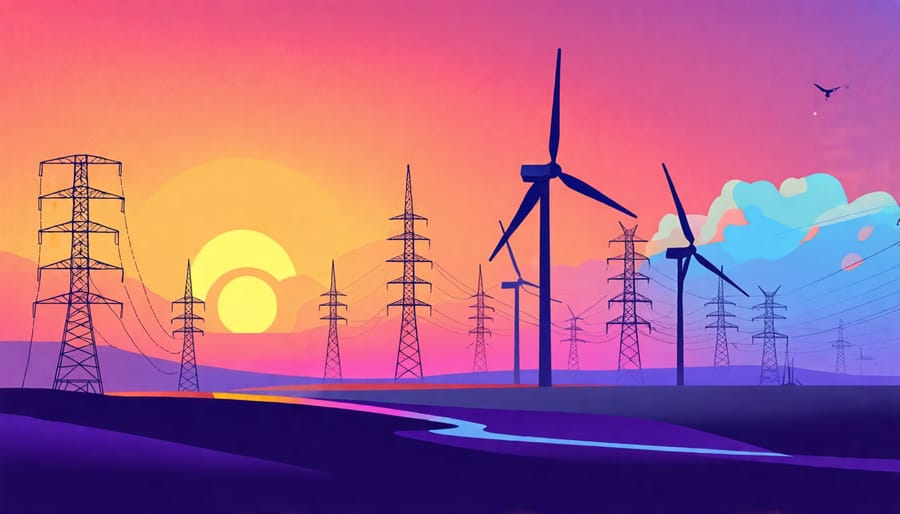
Innovations Driving Wind Energy Forward
The wind energy sector is continuously evolving, with emerging technologies driving innovation and efficiency. One groundbreaking development is the advent of floating offshore platforms, which allow wind turbines to be installed in deeper waters where winds are stronger and more consistent. These platforms open up vast new areas for wind energy generation, significantly increasing the potential for renewable power production.
Another exciting innovation is the development of smart rotors, which incorporate advanced sensors and control systems to optimize blade pitch and rotor speed in real-time. By adapting to changing wind conditions, smart rotors can maximize energy capture and minimize stress on turbine components, leading to increased efficiency and longer lifespans. This technology is particularly valuable in areas with variable wind speeds, enabling wind farms to generate more consistent power output.
Artificial intelligence (AI) is also playing an increasingly important role in wind energy optimization. AI algorithms can analyze vast amounts of data from wind turbines, weather forecasts, and grid demands to predict and optimize power generation. By continuously learning and adapting, AI systems can help wind farm operators make data-driven decisions to maximize energy production, reduce downtime, and minimize costs. As AI technology continues to advance, it has the potential to revolutionize the way wind energy is managed and integrated into the grid.
These innovations, along with advancements in materials science, grid integration, and energy storage, are driving the wind energy sector forward. As the world moves towards a cleaner, more sustainable future, these technologies will play a crucial role in harnessing the power of the wind and delivering reliable, affordable, and environmentally friendly energy to communities around the globe.
Conclusion
In conclusion, wind energy has emerged as a powerful and promising renewable energy source with the potential to transform the global energy landscape. By harnessing the kinetic energy of moving air, wind turbines generate clean electricity without emitting greenhouse gases or pollutants. Advancements in turbine design, materials, and control systems continue to improve efficiency and reliability. As costs decline and public support grows, the future outlook for wind energy is increasingly bright.
Wind power offers a sustainable path forward, reducing reliance on finite fossil fuels while mitigating climate change. Its scalability allows for deployment in various settings, from expansive offshore wind farms to smaller community-based projects. With ongoing research and innovation, the industry is poised for significant growth in the coming years.
As we look ahead, wind energy will undoubtedly play a crucial role in the transition to a low-carbon economy. By embracing this abundant, renewable resource, we can create a cleaner, more resilient energy system that benefits both people and the planet. The wind is in our sails, propelling us towards a brighter, more sustainable future – one where clean energy powers our homes, businesses, and communities. Together, we can harness the might of the wind and build a world where renewable energy thrives, ensuring a healthier environment for generations to come.

